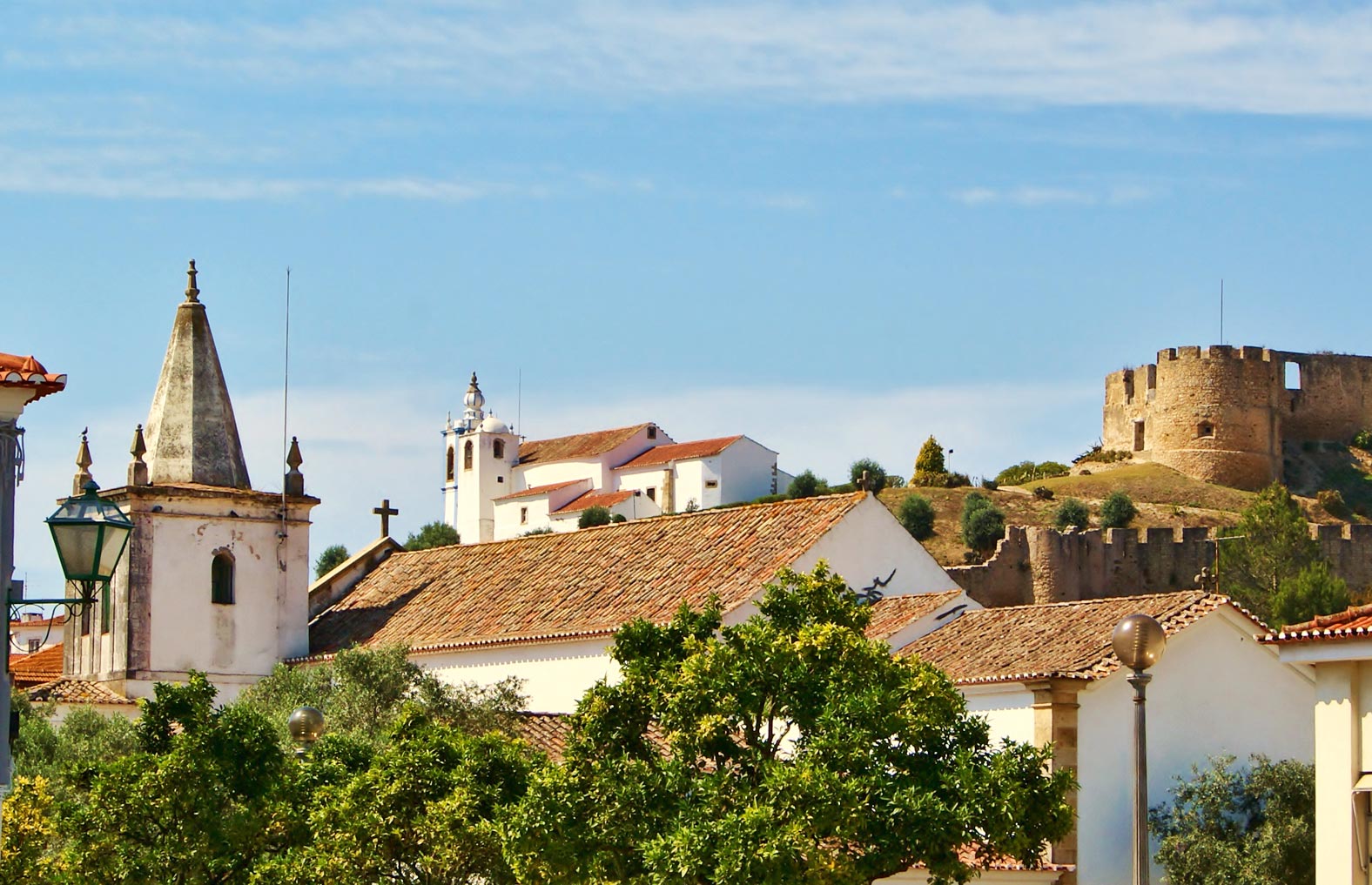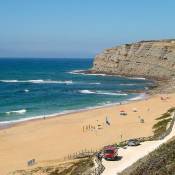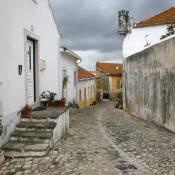
The small city of Torres Vedras is situated about an hour north of Lisbon and a few kilometres inland. Although not immediately bursting with character there are a few sights worth seeing, many of which are concentrated in the jumble of cobbled streets that run down from the castle. This is also a town with a long and rich history.
The focal point for visitors to Torres Vedras is generally the 13th castle which sits atop a steep hill overlooking what is otherwise a flat town. Once a favoured royal residence the castle was more or less reduced to rubble by the great earthquake of 1755. What you see today is a combination of the old castle keep and walls, which have been rebuilt and restored at various points in history according to the needs of the time.
Within the castle's outer walls is a well-tended garden and the church of Santa Maria do Castelo. This whitewashed church with its distinctive blue and white bell tower is one of the oldest churches in the area with the Romanesque main entrance dating back to the 12th century.
A little way down from the castle is the leafy Praça 25 de Abril with its central obelisk commemorating the Peninsula War. However, the main feature here is the 16th century Convento da Graça which dominates the southern end of the square. Today the monastery houses Torres Vedras’ municipal museum - the Museu Leonel Trindade. Much of the collection here is devoted to archeological finds from the local area with prehistoric tools and pottery along with Roman artefacts recovered from the castle and local villas. The museum also has a room dedicated to the Peninsula War with various weapons and uniforms on display.
Also within the old convent is the monastery church, the Igreja da Graça, which is open for mass on the weekend. The church has a fine 17th century gilded altarpiece and is the resting place of São Gonçalo de Lagos who's tomb lies in the chancel.
Perhaps the most interesting church in Torres Vedras is the Igreja de São Pedro. The main attraction here is the Manueline entrance which features a winged dragon amongst its intricate and ornate stonework. The interior is also quite splendidly decorated with a painted wooden ceiling and azulejo tiles depicting scenes of everyday life in the town.
Lying just to the east of Torres Vedras is the Aqueduto da Fonte dos Canos, a section of aqueduct that once stretched for two kilometres carrying water to the Chafariz dos Canos, an ornate 13th century water fountain located near the castle. It is uncertain whether the aqueduct was actually built at the same time as the fountain, the only mention of a date anywhere states "before 1561" which is not that helpful! Certain sections of the aqueduct run underground but it is the length where the structure crosses the Alenquer road and Sizandro River that are the most impressive. Here there are two tiers of Gothic arches rising several metres above the fields below.
Linhas de Torres (Lines of Torres Vedras)
A little over 200 years ago Torres Vedras was on the frontline of the struggle between European super-powers. With Lisbon looking like it might fall to the advancing French forces of Napoleon a bold plan was hatched by the Portuguese and their British allies. It was the Duke of Wellington's extraordinarily ambitious plan that would see a series of fortifications stretching from the coast near Torres Vedras all the way to the river Tejo near Vila Franca de Xira. There were in fact three lines of fortification comprising of over 600 guns and 152 fortresses along with extensive defensive earthworks. In total the combined lines stretched for around 100 km and required 140,000 troops to defend them.
Perhaps the most amazing thing about the Linhas de Torres were that they were completed within a year of their start in 1809 and in near secrecy. This was no small task and took its toll on the locals; not only were they conscripted to help with the construction but the "scorched-earth" policy beyond the lines resulted in great hardship with farms and homes being destroyed to thwart the invaders.
Despite the apparent desperation of the plan the fortifications proved to be a military triumph and, in fact, never so combat. It is said that in 1810 the advancing french General André Masséna, who commanded 65,000 troops, was amazed to see the fortifications which had seemingly appeared out of thin air. He quickly realised they were virtually impregnable and fell back to Santarem. With little in the way of provisions and plummeting morale the French troops eventually withdrew across the Spanish border in 1811.
Today there is surprisingly scant evidence of these dramatic events as many of the excavations have returned to nature. Most notable of all the fortifications in the immediate area is the Forte de São Vicente. Capable of holding up to 4,000 men the fort is encompassed in a 1.5 km wall with implacements for 39 cannons. Largely untouched the site's main feature is the small chapel but there are also extensive trenches and a powder room.












